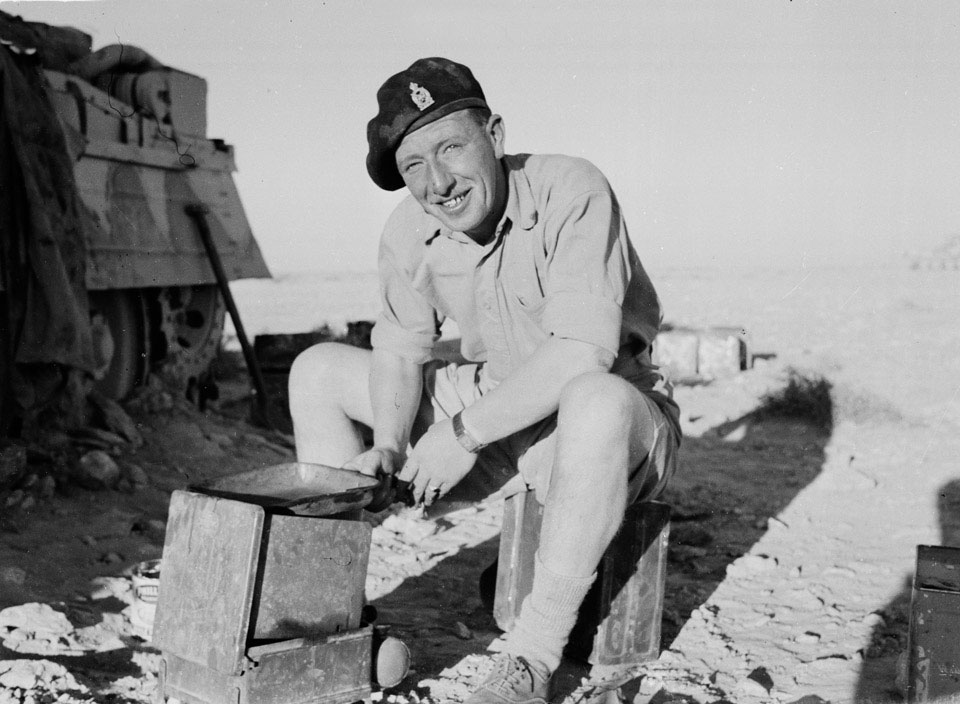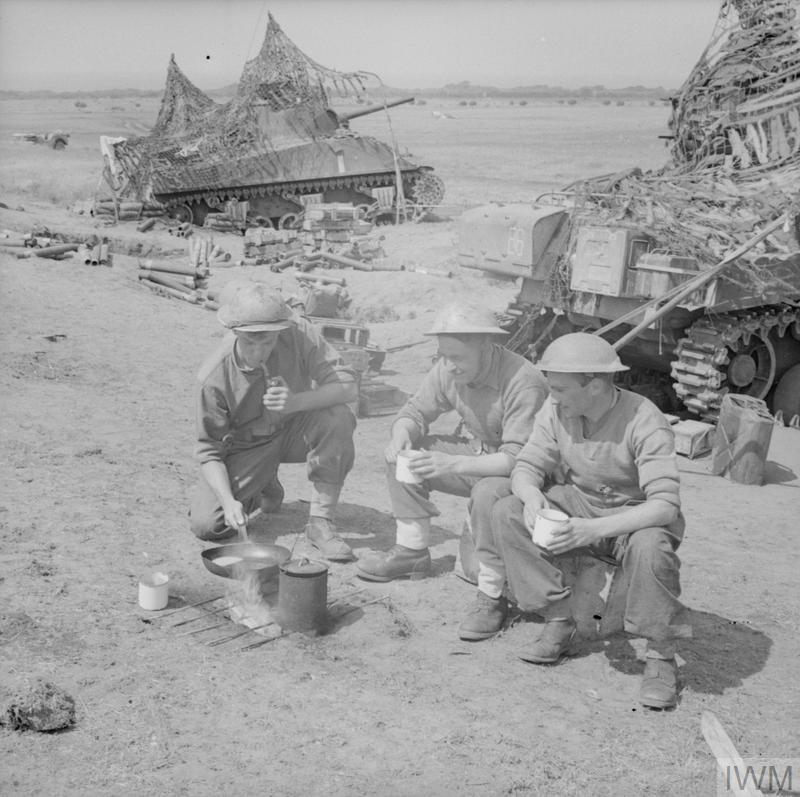1) A thread on food and cooking in the British Army during the Second World War, principally in N. Africa and NWE. This interest is a spin off from research related to my PhD and particularly from a paper I presented at the @Ethnography_LK 2019. I think, an under-examined area.
2) The focus is on the food eaten and the methods of cooking at section, troop, platoon and squadron level. Smallish numbers involved and where soldiers largely looked after themselves during operations.
Both the issued rations, their cooking methods and availability of foodstuffs to supplement rations varied both by time and by place.
4) In North Africa in 1940-43, the British Army began the war with issued rations very similar to those in use in 1918. Soldiers were supposed to receive about 3,000 to 3,700 calories per day depending on activity. Food for troops at or near the front was mainly tinned and...
5)...composed chiefly of bully beef, biscuits, jam, margarine and bacon. The shortage of water was a constant problem, exacerbated by the high salt content of much of the diet.
6) Water rations varied but most men had about 5-6 pints of water per day including for washing! On some occasions it could temporarily go as low as half a pint per day. This improved somewhat later on but seldom seems to have been much more than 7. Water quality was often poor.
7) Veterans I interviewed spoke of it often tasting of petrol or chlorine or worse, both!
Tea remained one of the best ways of disguising unpleasant tasting water although the cultural significance of the brew was already entrenched and its importance remained on into Italy and NWE. Its ritual and morale building qualities are hard to over-emphasise.
10) Most cooking in the field was done on one of three types of portable stove; Cooker, Portable No. 1, 2 and 3. Of these, the No. 2 was intended for section size groups (up to 10). All of these were petrol fuelled and were fairly efficient.
11) However, in the desert they were found to be easily clogged or damaged by sand and grit. This is where the legendary Benghazi Burner or Desert Stove appeared. This was a petrol can or biscuit tin with a few inches of sand in it which was then soaked in petrol.
Once the petrol was lit it would burn quite well for several minutes. It also made relatively small amounts of smoke. A container (kettle, pot etc.) would be suspended over it or even sat in it to heat the contents. This method of cooking became widespread and was subsequently..
..a marker for former desert units in Italy and NWE. Benghazi Burners were quick to set up and easy to use but they were also pretty dangerous. There are numerous directives to halt their use in 21st Army Group.
The number of injuries due to ‘accidental burns’ were significant. Old habits died hard though and they can still be seen in use in photos from 1945.
RTR troops in Italy, May 1944 cooking. Tea already done. Looks like fried eggs. Note Benghazhi burner & #39;dug in& #39; and a griddle (non-issue). Nonchalent pipe smoking cook a bonus.
In the middle years of the war, the Army made significant moves to improve food and cooking equipment. The Army Catering Corps was formed in 1941, reflecting a more concerted effort around nutrition in general. Towards the end of 1942, the first compo rations began to be issued.
These included individually issued 24- and 48-hour ration packs as well as larger 14-day packs. These opened up a wider range of foods. Although bully beef and biscuits still featured, chocolate, boiled sweets, tinned fish and cheese now also appeared. Also, some actual veg!
The diet eaten at or near the front remained monotonous and soldiers were endlessly inventive in their efforts to improve their lot. In North Africa, biscuits were crushed into a porridge like paste with water called burgoo.
This was apparently not a gourmet experience but it could be made bearable with the addition of jam or sugar.
Anyone know why burgoo? Has the ring of army mis-heard or altered Arabic or Hindi.
The more adventurous and culinarily gifted could crush biscuits to a fine powder (hammer and sack obv.) which with the addition of powdered eggs and/or baking soda (or Liver Salts) could make cakes and pastry after a fashion.
Needless to say, such experiments were confined to periods in reserve or in low intensity static warfare. At more difficult times, men lived on tea, biscuits and cold bully beef.
Local produce could be bought, bartered for or stolen. Sometimes even being a gift from those grateful to be liberated.
Many foods unknown or very uncommon in the UK at the time except perhaps amongst the wealthy were first encountered during the war by ordinary British citizens; olive oil, figs, dates, sweet potatoes and camembert all get mentioned in veteran interviews.
My grandfather (2 KRRC) developed a lifelong love of figs and dates alongside a near phobic dislike of sweet potatoes in N. Africa.
Armoured units had more opportunities to carry equipment for cooking and food than the infantry. In addition, tank exhausts could be used to boil water or heat food.
The plethora of boxes, sacks and cannisters strapped to British AFVs (especially those of the more experienced formations) often contained food and cooking equipment. Some officers even privately purchased camping stoves to use in the field.

 Read on Twitter
Read on Twitter




